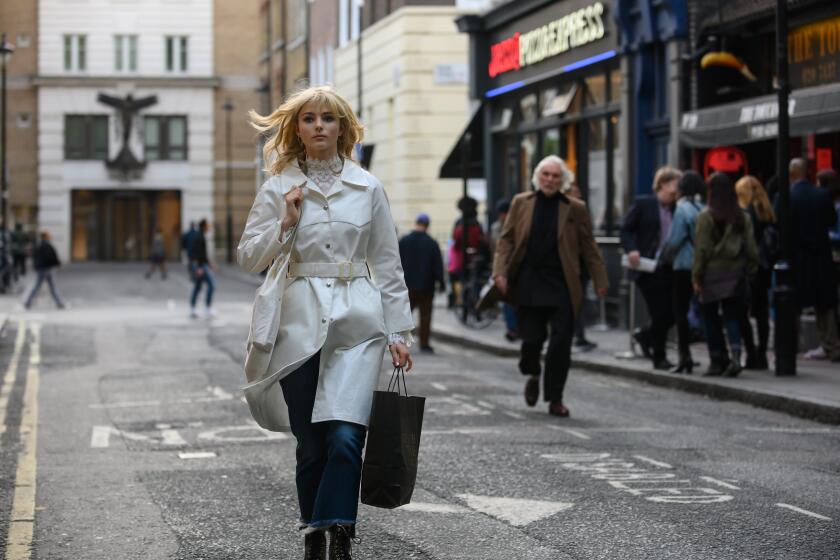How Edgar Wright set out to challenge himself, and the past, with ‘Last Night in Soho’
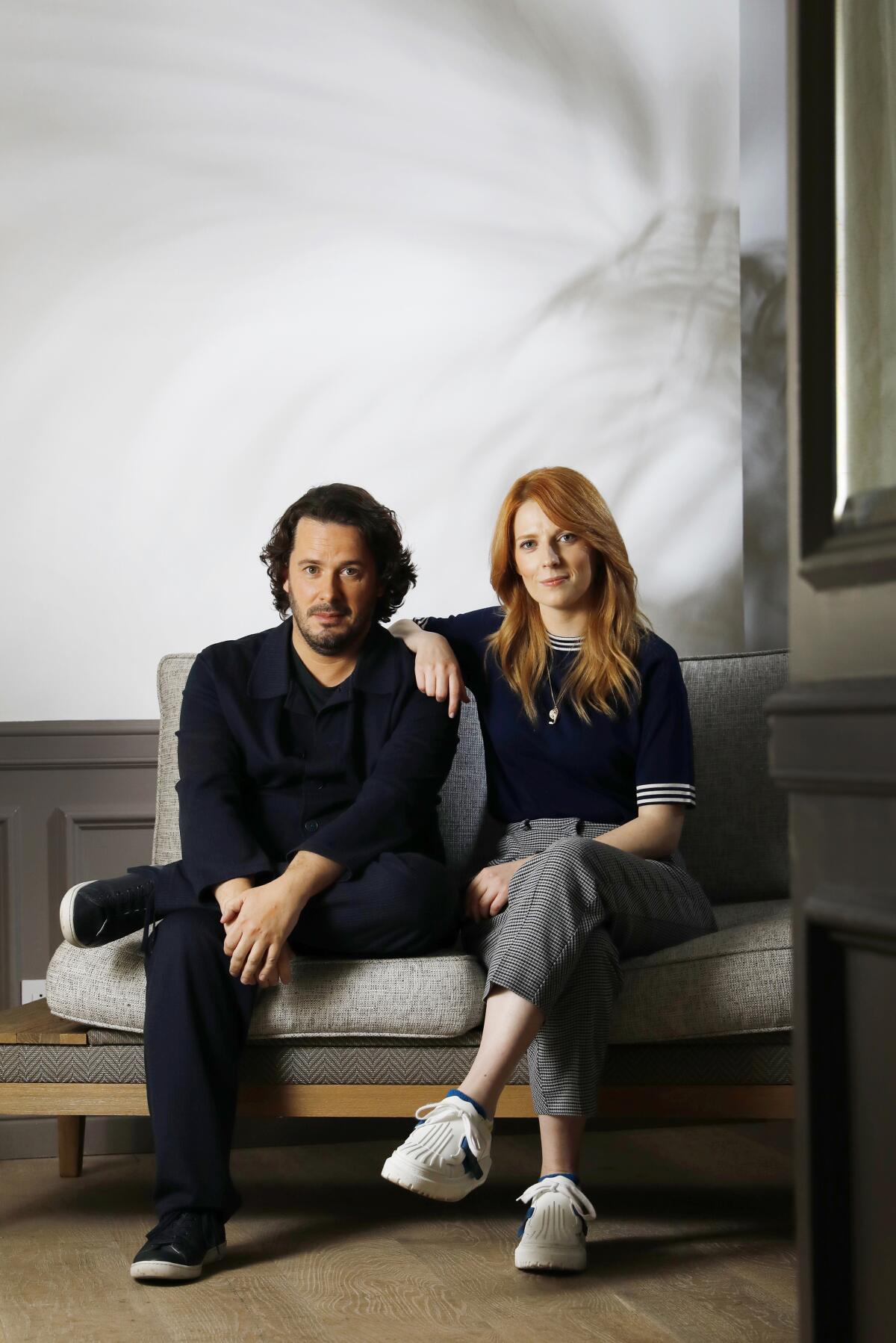
- Share via
When Edgar Wright set out to follow “Baby Driver” — the cars-and-crime themed 2017 movie that proved to be his biggest worldwide hit to date by a wide margin — he landed on a decidely different and darker tale in “Last Night in Soho.” Known for the madcap exuberance of “Shaun of the Dead” and “Scott Pilgrim vs. the World,” Wright has taken an unexpected turn into a moody and unnerving psychological horror thriller.
Blending the emotional intensity of 1960s British dramas with the color-saturated style of Italian giallos (and the films that inspired them), Wright aimed to capture something sinister lurking just beneath the central London neighborhoods where he lives and works.
For the record:
5:29 p.m. Nov. 3, 2021Anya Taylor-Joy’s character is named Sandie. Her name was misspelled Sandy.
“A lot of films of that period are about the darker side of Soho or of show business,” said Wright of the sub-strain of ’60s films that served as a core inspiration. “You still have to question where they’re coming from, because there’s a lot of them, which are more the sensationalistic ones, that take this kind of punitive approach to the female characters. There’s a lot of movies where it seems that the genre is ’Girl comes to London to make it big and is roundly punished for her efforts.’
“And they’re all written by men and directed by men. And it seems like the old guard slapping down the liberated generation,” Wright said. “That was one of the many kernels of the idea that I thought, ‘This is an interesting genre.’ And what if you did a movie where you kind of subverted it to a modern perspective through a twin narrative of a contemporary girl coming to the big city too?”
Wright and his Oscar nominated co-writer Krysty Wilson-Cairns (“1917”) crafted the story of contemporary fashion student Eloise (Thomasin McKenzie), who also goes by Ellie, as she leaves behind small-town life for London. Lost and lonely, she soon finds herself wrapped up in the nighttime world of her dreams, where she has startlingly real visions of a young woman named Sandie (Anya-Taylor Joy) who was an aspiring singer in the 1960s in the same neighborhoods where Eloise now lives.
Thomasin McKenzie plays a woman transported to 1960s London in Edgar Wright’s feminist horror film “Last Night in Soho,” co-starring Anya Taylor-Joy.
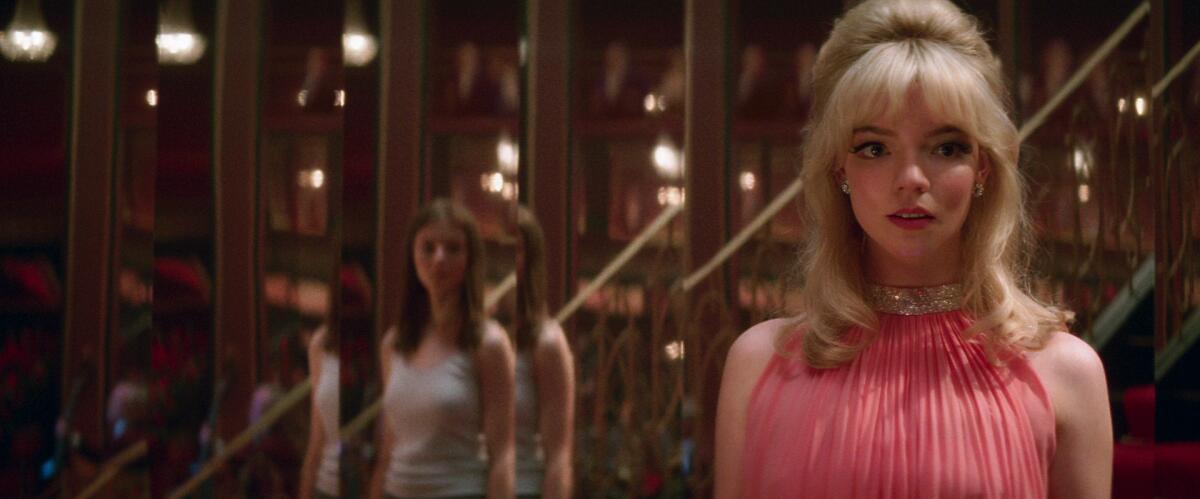
Initially captivated by Sandie’s glamour and promise, Eloise soon witnesses Sandie’s exploitation as she’s forced into prostitution under the guise of furthering her career. Convinced that Sandie was murdered, Eloise becomes obsessed with solving the seeming decades-old cold case in the present day.
“The construction of the movie, where it’s a slow burn from something so alluring and glamorous to something very dark and disturbing, is absolutely intentional,” said Wright during a recent interview days before the movie’s opening.
Describing the movie as a “dark Valentine” to London and the Soho neighborhood, Wright’s cast also includes emblematic actors of ’60s British cinema — Rita Tushingham, Terence Stamp and Diana Rigg in her final role.
Aside from the film’s darker tone, another notable difference in comparing “Last Night in Soho” to Wright’s previous work is that the film centers around two women instead of young men trying to get their act together. While “Baby Driver” in particular drew some criticism for having underdeveloped female characters, Wright says “Last Night in Soho” was not a purposeful response. The idea, he says, came up long before “Baby Driver,” and he already had an itch to switch things up.
When Wright first met Wilson-Cairns, introduced by her “1917” collaborator Sam Mendes at a members club in Soho, they immediately bonded over their shared histories. The club was right across the street from an apartment where Wilson-Cairns, who moved to London from her native Glasgow, had once lived above one of the last remaining strip clubs in the area. Wright soon began telling her the genesis of “Last Night in Soho” and eventually asked her to collaborate as well.
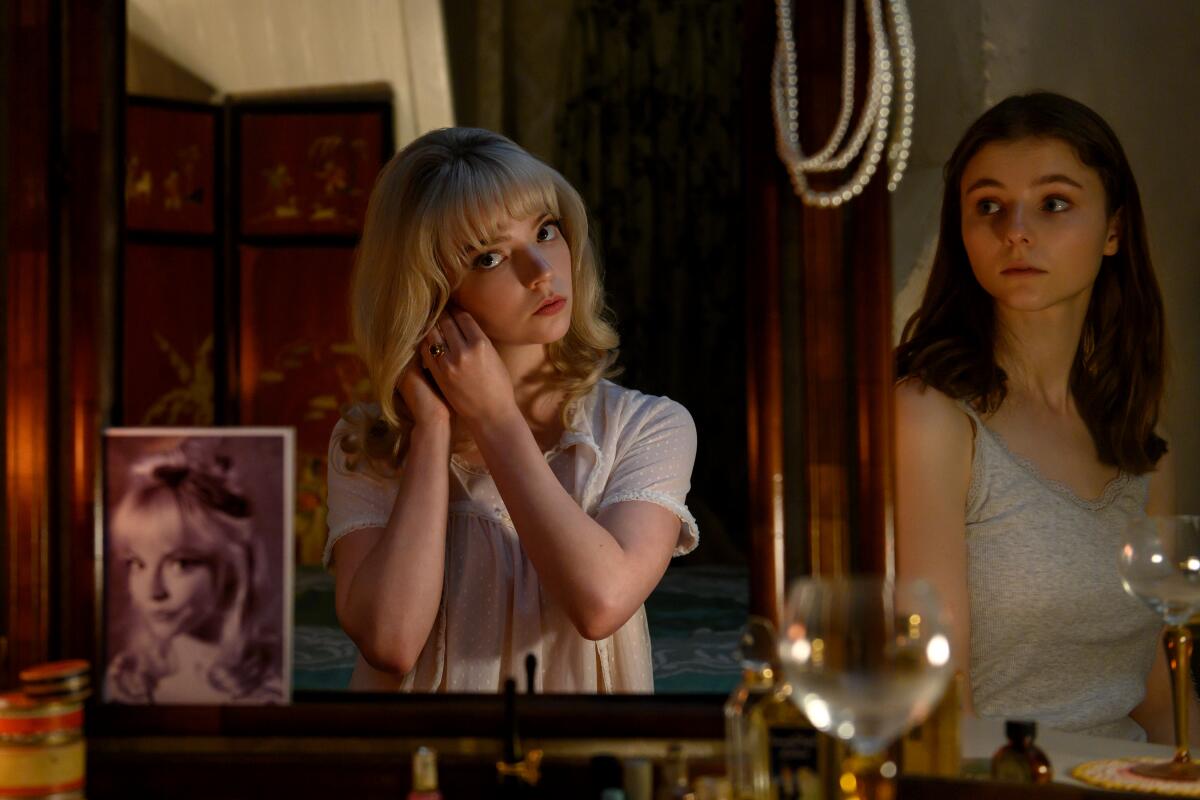
Wilson-Cairns is quick to point out she was not there strictly to punch up the female viewpoint in Wright’s world. “The very first time I heard the story, those two female characters were absolutely in the DNA of it. It was always a story about two women,” she said. “I didn’t come in to just be the female writer in the room. I think our shared life experience, the fact that we both loved Soho and lived in Soho and Soho had kind of creeped under the skin of both of us — that was more important than the fact that I was a woman, really.
“But at the same time, I got to bring a lot of my life perspective to it as well. The idea of being in taxi cabs and creepy drivers flirting with you but not quite flirting with you,” she added. “I never had to push that, and I never had to say, ‘Oh, I’m a woman, I understand this.’ He had such a keen insight and a desire to listen to all the women in his life to then create something that felt authentic.”
Some of the movie’s key scenes happen in an exacting re-creation of the Café de Paris, a famed London nightclub that opened in 1924 and only recently closed during the pandemic. Rigg, whose character exists in the film’s present day and has no scenes on that set, had mentioned to Wright that she was at the actual Café de Paris for her 18th birthday to see the London debut of singer Shirley Bassey. Wright then escorted her onto the soundstage, to in a sense step back in time.
“She saw it and she said, ‘Oh, this is amazing, it looks just like it, do tell your production designer he did such a great job,’” Wright said. “And then there was this, like, dot, dot, dot ... There’s something else coming. And I think it’s very key to the movie, she said, ‘I remember walking down the stairs and lots of rheumy-eyed men looking at me up and down and feeling like a piece of meat.’
Writer-director Edgar Wright and star Thomasin McKenzie discuss Diana Rigg’s casting and connection to 1960s London, a key setting in the horror-thriller.
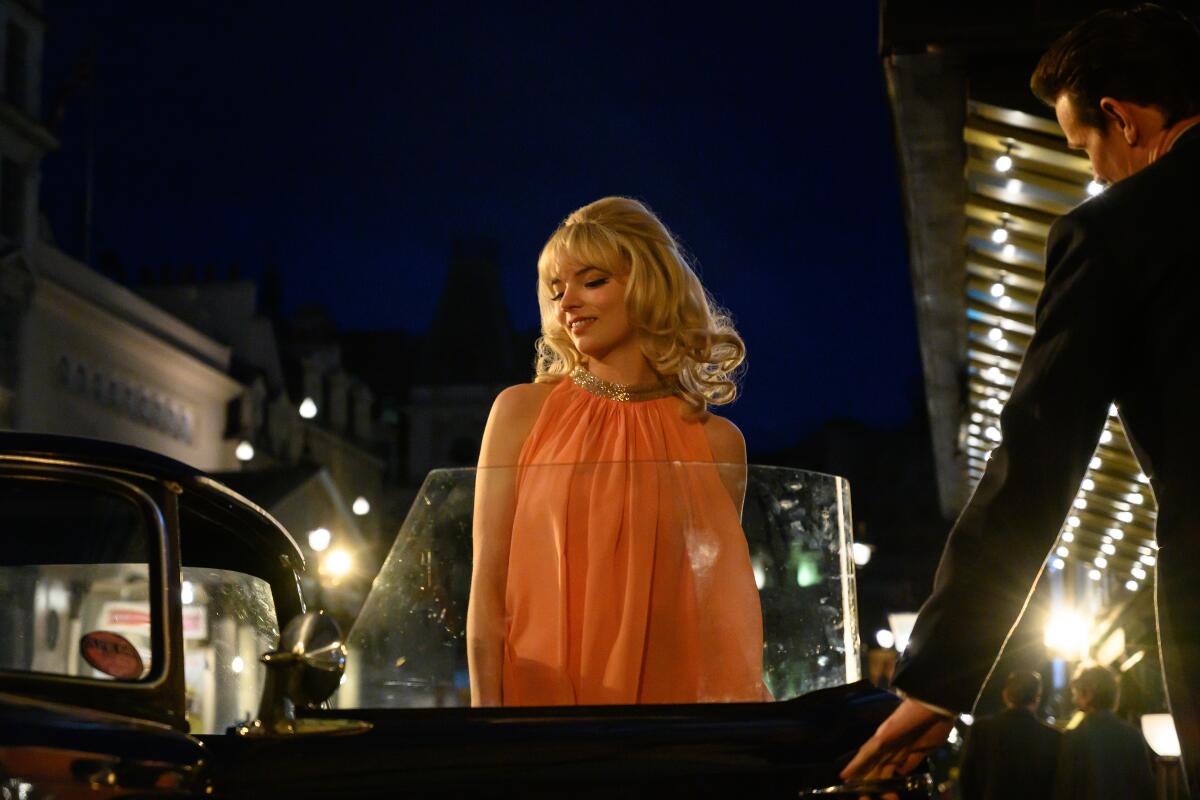
“That’s literally what happens to Anya Taylor-Joy in her first scene,” said Wright. “And I’d have to think Diana even was making the connection herself. The instant reaction of seeing it sort of conjured up a good memory first, and a darker memory immediately afterward. I think that pretty much sums up the movie.”
Though they didn’t draw from any one specific story in crafting Sandie’s life amidst the seedy underbelly of Soho showbiz, Wright and Wilson-Cairns drew from a dossier of research prepared by Lucy Pardee, who interviewed numerous people who lived through the era and knew the area well.
“Something that I find truly nightmarish — and I guess there’s an element where I’m sort of giving a sharp rebuke to myself — is the danger of being overly nostalgic about previous decades,” said Wright. “In a way, the film is about romanticizing the past and why it’s ... wrong to do that. When people use the phrase ‘the good old days,’ it’s to suggest that there was a decade where everything was perfect and nothing was bad. And of course that’s not true. Everything that’s bad now, it’s just as bad then if not worse. And it would be wrong to look back with rose-tinted spectacles.”
“When I started getting into the research, I found quite harrowing that a lot of the problems that women faced back then — horrific sexism, you name it — were still very present in my life,” said Wilson-Cairns. “It was a very sobering experience to realize, ‘Oh, these problems have been the same problems forever.’ I think when you’re writing a horror film, you should write about something that truly scares you — and toxic masculinity and violence against women and exploitation of women does really scare me because it is such a part of our world”
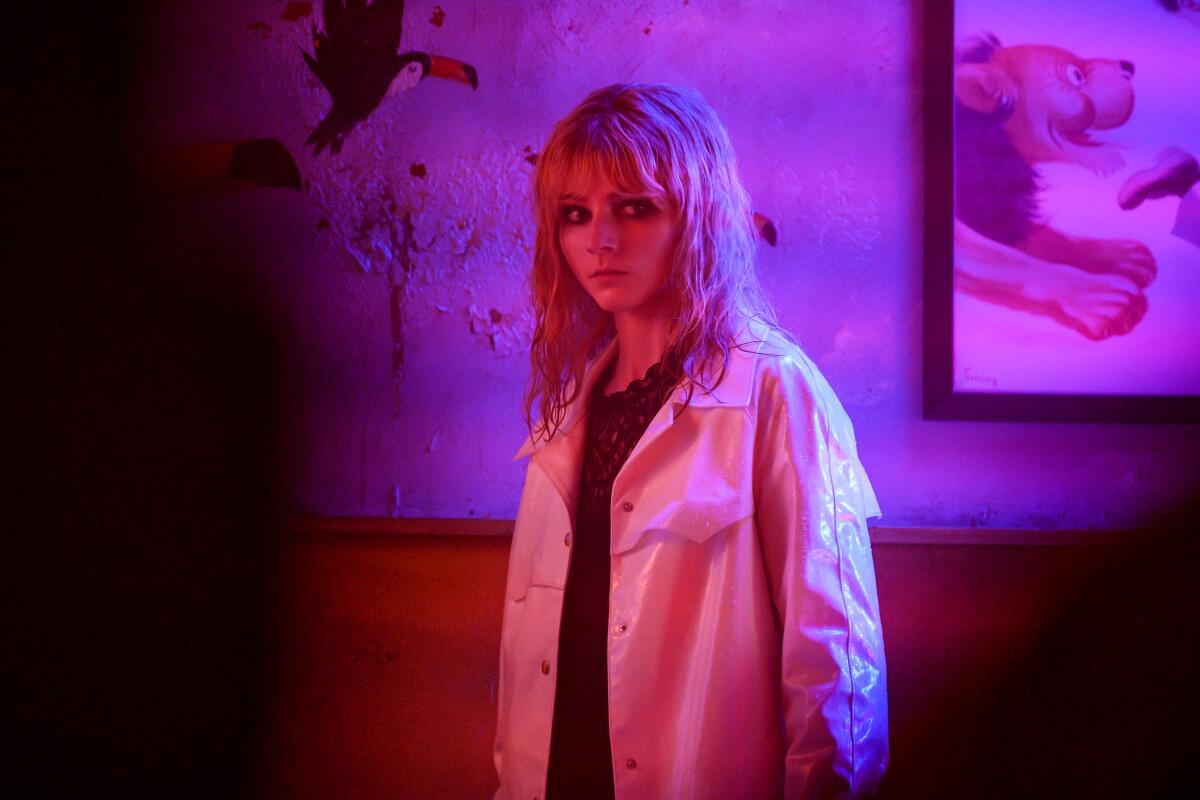
The film also touches on issues of mental illness, sexual violence, race and class in ways that are new for Wright. Ellie is described as having “a gift” that could be seen as either a paranormal psychic power or a sign of mental illness. In what Wright calls a “key scene,” Ellie ends up in a police station trying to explain herself and all she has seen and experienced. Dismissed entirely by a male officer, she finds more sympathy from a female officer listening to a young woman who is obviously troubled, scared and lonely in her new life in the city.
““You’ve been on the journey with Eloise and seen everything that she’s seen with the knowledge that she has,” said Wright of the scene. “She can see things, but when she repeats it in a more formal way, like in a police interview room, they’re obviously looking at her like she’s crazy. My answer ... is I believe Eloise.”
“Personally, I don’t think she’s mentally ill. I truly believe that she has a gift, and Edgar and I both know people like that,” said Wilson-Cairns. “She believes in what she knows and what she understands. And then that scene in the police station is obviously very important because we, the audience, know everything that Ellie’s seen, we’ve been with her every step of the journey. We knew what she’s trying to get across and that male police officer doesn’t want to listen. And I think, ‘OK, yes, this is a genre film, but I think a lot of women have been in those rooms and have not been listened to when they had very valid points.’ So while what Ellie is trying to say is about a murder in the past, hopefully that will resonate with people who’ve been in those unfortunate situations otherwise.”
The film ends on an ambiguous note, with the mystery of what happened to Sandie solved but new uncertainties emerging about Eloise’s future. And that‘s just how Wright and Wilson-Cairns wanted it.
“I think we always knew that the ending we wanted to build to was not a completely happy, Disney-fied ending because that’s just not what happens in the world,” said Wilson-Cairns. “A sense of reality and a sense of honesty is very important in this film. Even though you are spending a good portion of it in Ellie’s head and in her dreams, ultimately keeping it grounded allows you to then go into those fantasies as a kind of free fall and then you pull back that bungee cord of reality.”
“I’d like people to chew on it,” said Wright. “I like films that end on a bit of a question mark.”
More to Read
Only good movies
Get the Indie Focus newsletter, Mark Olsen's weekly guide to the world of cinema.
You may occasionally receive promotional content from the Los Angeles Times.
